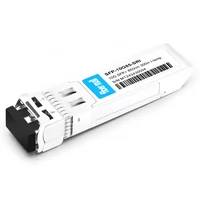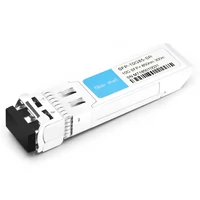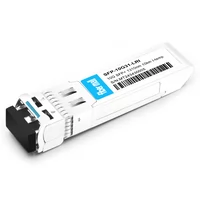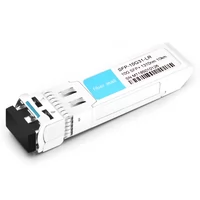Optical transceiver modules are increasingly becoming an integral part of modern networking devices functioning over long distances through the bandwidth of optical fiber wires. This paper seeks to fill a gap concerning the existing 10G optical transceivers by showcasing two popular makes of 10GSR-85-1 and 10GLR31-I approved in supporting different working environments as well as varying levels of performance including that of a 10GSR-85-1 as opposed to a 10GLR31-I. This article will, therefore, provide a detailed analysis of the focus of the two modules in comparison by highlighting their key technical specifications, range specifications, and operational objectives. When articulating the similarities, differences, or even the technical details of any of those devices, the readers will appreciate that it is tough to define one particular optical transceiver that can conveniently serve every networking requirement. Such a person may understand connections but is not able to install systems related to them; the guide, which is built in this way, will complete the informational picture of 10G optical transceivers.
Table of Contents
ToggleWhat Are the Key Differences Between 10GSR-85-1 and 10GLR31-I?
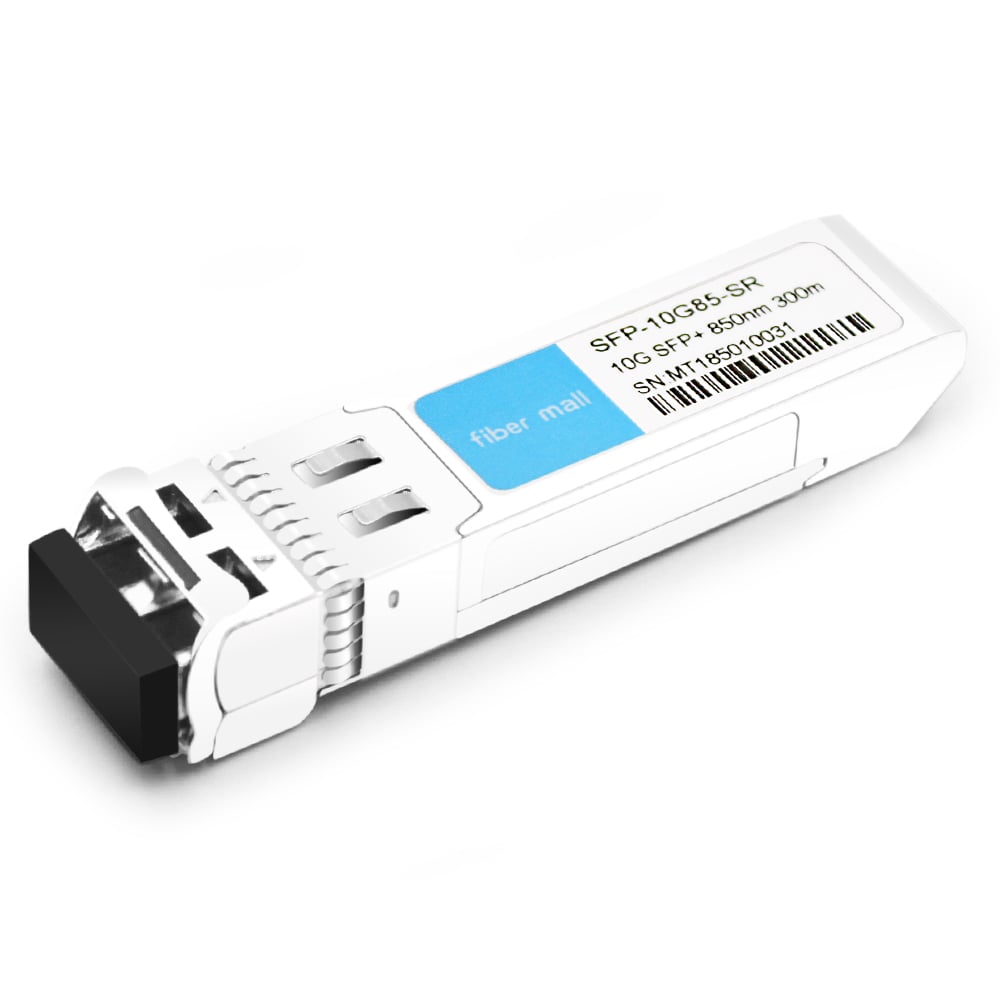
There are critical areas of variability in features between the 10GSR – 85 -1 compared to the 10GLR31 – I transceiver module, mainly distance, range of application, and technologies used, for example, lc transceiver configurations. The 10GSR-85-1 has been appropriately designed for communication over short distances, probably not beyond 300 meters, in the case of multimode fiber. The 10GLR31-I, on the other hand, has a long-distance coverage of not less than 10 kilometers using single-mode fiber. Also, it is tested that the 10GLR31-I can operate in large metropolitan area networks and cellular base stations interconnected by a high-speed net. This is the dual nature of hi-tech transceiver modules, which have to support 10GBASE standards but fulfill a well-defined niche in the chosen network architecture – 10GSR85-1 is directed to interbuilding connections, while 10GLR31-I increases network coverage.
How Does Transmission Distance Vary Between Them?
Various parameters within each module and type of fiber lead to a change in the transmission distance between 10GSR-85-1 and 10GLR31-I optical transceivers. The 10GSR-85-1 is made for short communication and stands over a multimode fiber up to a distance of approximately 300 meters. This is useful in data transfer over short distances within limited places like a campus or an office building. On the other hand, the 10GLR31- I is designed for long communication stretches and uses single-mode fiber, allowing it to transmit data over 10 kilometers. This is an important feature, especially when there are comprehensive geographical network designs of data centers and metropolitan area networks where long-distance communication has to be very fast and effective.
Which Transceiver Supports Different Network Needs?
These 10GSR-85-1 optical transceivers can be effectively employed in short-range applications like intra-building or building-to-building connectivity and small campus networks because they are compatible with multimode fiber cable and reach a distance of about 300 meters. In contrast, the 10GLR31-I transceiver is targeted for long-reach requirements in the network. It supports a distance of ten kilometers on single-mode fiber cables, which makes it useful for extensive deployments in data centers and metropolitan areas networks where long-reach requirements and extensive deployment are desirable.
Do They Have Compatibility Issues?
The 10GSR-85-1 and 10GLR31-I transceivers also have compatibility issues, which are usually due to the difference in the kind of fiber that one is designed for and other such type of problems; the 10GSR-85-1 is compatible with multimode fiber while the 10GLR31-I is compatible with single-mode fiber. For this reason, these modules do not have interchangeable possibilities, and their use in a network must consider the existing fiber topology. Further, however, both models perform within the parameters set by the industry design standards; it is essential to note that the other Levers of the network that the respective transceiver will be connected to operate within the transceiver’s wavelength and reach limits to avoid network interruption.
Why Choose the 10GLR31-I Optical Transceiver?
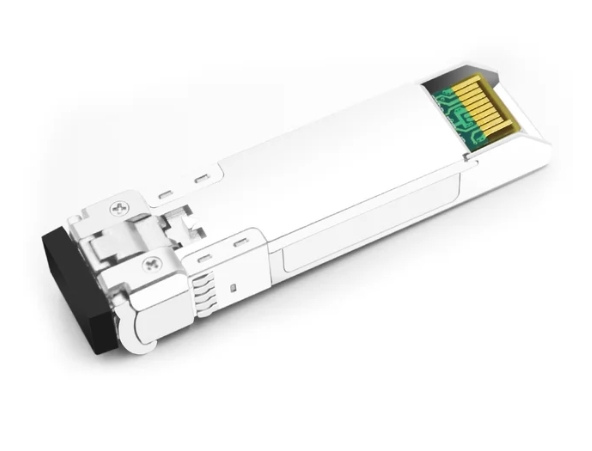
Is Single Mode an Advantage?
The benefits of single-mode fiber are evident compared to that of multimode fiber. However, its applications are restricted when considering the distance and bandwidth. Utilizing this type of fiber as core material, with its core being smaller, reduces light dispersion and attenuation, hence ensuring maximum data transmission over long distances of 80 kilometers or above without signal loss or distortion. Furthermore, there are high bandwidths supported by single-mode fiber, allowing for high-density operational requirements and room for network expansion. This feature enables easy large-scale deployment and signals quality over distance retention within the telecommunications and enterprise networks. The characteristics mentioned above are why the transceiver 10GLR31-I is widely used in extended and extended resilient network infrastructures.
What Makes it Suitable for 10km Data Transfer?
The 10GLR31-I optical transceiver is a long-range capable transceiver suited for a 10km distance due to the implementation of a single-mode fiber. This transceiver works at 1310nm, which is the best suited for reducing signal loss and increasing the distance limit to relatively less data loss from the network. Its policies also adhere to the relevant standard provisions of the ine1783.2 compliance with the IEEE 802.3ae standards to enhance the performance and interoperability over distances with other networking devices. Network porosity is, therefore, preserved even where millions and millions of data packets are transferred in a day due to the multifaceted technology of the advanced lower power-consuming transceiver.
How Does Low Power Consumption Benefit Users?
Optical transceivers with low power consumption result in various benefits in terms of the environment and finances. In my view, it means the discrimination of operational costs translating to low energy use, which is essential in the case of large data centers that have to keep many active devices working simultaneously. In addition, it helps produce less heat, which cuts back the load on cooling systems and extends the life of appliances. Also, it results in less energy use, which downscales the negative impacts carbon emissions have on the environment. The current and future generation of users of high-speed optical communication will benefit from energy-efficient forms of transceivers such as the 10GLR31-I, which are simple and functional in today’s network systems.
Why Opt for the 10GSR-85-1 Transceiver?
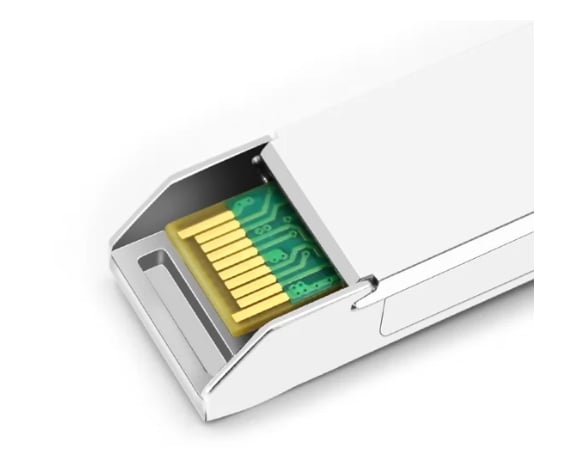
Is it Better for Multimode Applications?
Eyeing the 10GSR-85-1 transceiver for use in the multimode application is beneficial as it is built to enable short-distance data transmission over this multimode fiber. As the best websites explain, this transceiver operates at 850 nm, which is the best for the compatibility of the multimode fiber and its efficient features on the data center. Suitable for the 850nm 300m application over local networks or interconnects in particular, with the capability to transmit high-bandwidth signals over short distances without degradation, this standard also offers the advantage. Also, to support the increasing demand for high-speed data transmission in multimode applications, the 10GSR-85-1 complies with the standards set by IEEE 802.3ae, which enhances integration and reliability.
What Are the Ethernet Capabilities?
The 10GSR-85-1 transceiver incorporates various Ethernet features, which have been fashioned to address the current networking requirements. It supports 10 Gigabit Ethernet with almost no delay in high-speed data transmission; thus, it is suitable for systems requiring quick information processing. The transceiver operates with a line rate of 10.3125 Gbps, which aids in properly functioning the network. Also, since it also conforms to IEEE 802.3ae requirements, it permits functioning in various network components without any performance degradation in the operation of the specific components within the different networks.
Are There Any Specific High-Speed Data Advantages?
Indeed, there are certain high-rate benefits tied to the 10GSR-85-1 transceiver. While information on this subject is limited, such as that informed by the author of this paper, this transceiver is designed to present effectiveness in satisfied bandwidth applications. It provides lower latency, essential for performance in networks where operations are done rapidly. It allows for the quick transfer of data over shorter spans without a lot of wastage and thus is helpful in data fields and corporate frameworks, which need speed and stability in data transfer. These advantages align with the market need, so the transceiver is still preferred in high-rate data transfers.
How to Choose the Right Transceiver for Your Needs?
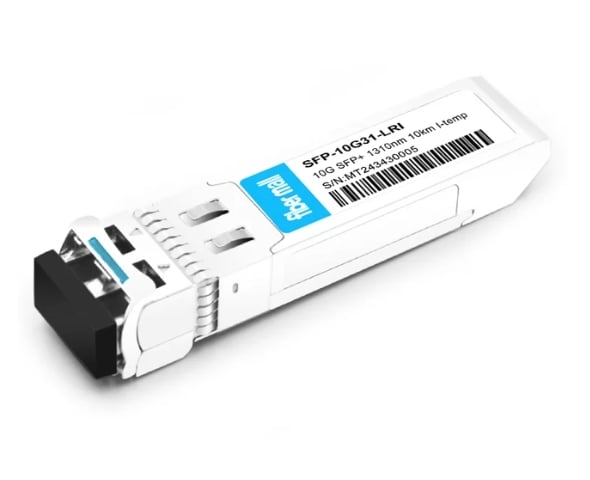
Which One Offers Better Reliability?
Specific considerations need to be made to establish the level of reliability each transceiver is capable of. The reliable performance of a transceiver is determined by its performance over a wide range of various network conditions, how well it fits into the current networks, and how well it meets industry requirements. It is one of the transceiver’s selling features listed by the leading resources. Specific devices that comply with industry standards, such as the IEEE 802.3, would give broader dependability because they have been built to work with one another. More so, products from vendors making and supporting these products have been noted to be more reliable. Reviews seen on some industry’s reputable websites provide information on the need for the transceivers to be used within their operating limits with practical use and for continuous dependence supported by responsive customer service at peak time demanding networks.
Does Transmission Efficiency Matter?
As expounded by the present-day leading resources, the critical nature of transmission efficiency in networking systems is indisputable. Efficient transmission translates to low data loss and delay, crucial for high-speed data transfer in sfp applications. Operational cost savings in optimal transmission efficiency are achieved as bandwidth utilization is maximized and the retransmissions are minimized per the top sources. In the same way that efficient systems support scalable infrastructure, it is necessary to safeguard technological investments from obsolescence. As such, choosing the proper transceivers that boost transmission efficiency will not only address the performance needs in the short term but also the prospects of operations in the future.
How Important is LC Duplex in Selection?
LC Duplex connectors are essential for fiber optic transceivers since this configuration is space-saving and appropriate for dense network infrastructures. Current authoritative sources assume that the LC Duplex connectors are the best for high-speed data transmission while accommodating reduced space within network racks. Their push-pull design makes it easier to connect and disconnect, thus decreasing the installation time and the workforce needed to do the job. In addition, LC duplex connectors are used in many industry applications due to compatibility with fiber optical standard systems, hence compatibility with various networking equipment. These examples provide ways the cable lower than the LC Duplex will help in the selection.
How Do Different Optical Transceiver Modules Affect Network Performance?
What Role Does 1310nm Play in Transceiver Choice?
The 1310nm wavelength becomes essential in selecting the transceiver because it provides optimal performance with medium-range communications when using single-mode fiber. In terms of dispersion and attenuation, the 1310nm wavelength is superior, allowing for effective data transmission with distances not exceeding 10 kilometers, hence being productive for enterprise and metropolitan area networks. Primary sources claim that transceivers that work at 1310nm are suitable for broadband applications, and their cost is not prohibitive, as most standard data rates are supported. Also, this low dispersion at this wavelength preserves signal quality, which is essential for high data quality in critical networking devices. Adopting such transceivers also conforms to the ever-increasing demand for more robust, forward-looking network scales.
How Does 850nm Impact Data Transfer?
This wavelength works mainly in multimode fiber applications, where data is transferred at very high speed but only within short distances, around 300 meters for an 850nm fiber. As a result, it is commonly used in data centers and local area networks (LANs) because it can carry very high data rates, which can even be up to 10G and above. The wavelength at this level provides a cheap connectivity solution for short-reach transceivers. The short-reach is feasible due to the performance associated with multimode fiber and low-cost transceiver modules. Since there is wider attenuation and dispersion at the 850nm wavelength within a relatively high frequency, this wavelength can’t be used in long-distance communication. Therefore, selecting transceivers at 850nm wavelength is applicable in cases where weight is put on the cost rather than on the span of the bandwidth.
Can Module Compatibility with Cisco Influence Decision?
Cisco is an influential factor when purchasing devices in the network planning process. Cisco is a strong player in the network hardware market, and its integration with other equipment increases operational efficiency, which is critical in society today. Compatibility reduces the likelihood of a number of technical issues, utilizing the learned support services from Cisco and optimizing the network performance and connectivity with the appropriate ports. Further, using passive optics or Active Optical cables that are appropriate or certified for use with Cisco devices will also ensure fewer breakdowns and lower maintenance frequency, which is favorable for the organization.
Reference Sources
Frequently Asked Questions (FAQs)
Q: What are the main differences between 10GSR-85-1 and 10GLR31-I optical transceiver modules?
A: The main differences lie in their transmission distance and wavelength. The 10GSR-85-1 is a 10G SFP+ module focusing on short-range (SR), shorter than 300 meters, typically operating distance using 850nm wavelength for mmf. The 10GLR31-I is a long-range (LR) module supporting longer distances using 1310nm wavelength for a reach of 10km on SMF, making it suitable for long-distance communication in telecommunication and data center structure-activity.
Q: Which fiber optic cable types are compatible with these modules?
A: The module is intended for use with multi-mode fiber (MMF) and mainly incorporates an OM3 or OM4 LC patch cord with the 10GSR-85-1 module. It also works with single-mode fiber (SMF) using OS1 or OS2 LC fiber patch cords with the 10GLR31-I module operational.
Q: Do these modules work in conjunction with Cisco switches?
A: Both modules are almost always operated in conjunction with the Cisco switches. 10GSR-85-1 has a similar operation with the SFP-10G-SR Cisco inline, while the 10GLR31-I can be compared with the OPLC SFP-10G-LR. However, it is always better to verify the compatibility of your Cisco switch model with the built-in sfp transceiver before making any purchase.
Q: What is DOM, and do these modules support it?
A: DOM is an abbreviation for Digital Optical Monitoring. Apart from the C/DWDM, both 10GSR-85-1 and 10GLR31-I modules usually support the DOM feature. Their parameters, such as temperature, voltage, and optical power, can be monitored in real-time. This is useful in both network productivity and troubleshooting.
Q: Are these modules suitable for 10GBASE-SR and 10GBASE-LR applications?
A: Certainly, the 10GSR-85-1 is for the 10GBASE-SR (Short Range) application, and the 10GLR31-I is for the 10GBASE-LR (Long Range) application. These standards specify the physical layer for 10 gigabit Ethernet signals over fiber optic mediums.
Q: Aside from these modules, are there options available for copper connection types?
A: Yes, for copper-based connections, 10GBASE-T SFP+ modules or RJ45 transceivers can be employed. These modules make it possible to connect with 10 G-based systems over Cat6a or Cat7 copper cables but within a distance of not more than 30m, which is normally cheaper compared to the long run of the devices.
Q: I need to choose between the 10GSR-85-1 and the 10GLR31-I for my network. How do I do that?
A: To make an informed decision, consider your network requirements, especially the distances between varied devices and the types of fiber optic cables installed. Opt for the 10GSR-85-1 connections within 300 meters on MMF and the 10GLR31-I for long-haul connections of 10 km on SMF. Also, please consider how well such equipment would work with your current equipment and its future use.
Q: Can these modules be used in different manufacturer systems such as FS or Ubiquiti?
A: Several third parties make their designs as FS or Ubiquiti (e.g., UF-SM-10G), whose modules are intended for multiple networking equipment. However, you must check that they fit with your hardware. As far as 10G data communication appliance modules are concerned, the FS SFP-10GLR-31 may be similarly functional as the 10GLR31-I, which is much less expensive than the 10GLR31-I for rapid data throughput applications.
Related Products:
-
 SFP-10G85-SRI 10G SFP+ SR 850nm 300m LC MMF DDM Industrial High Temperature Transceiver Module
$13.00
SFP-10G85-SRI 10G SFP+ SR 850nm 300m LC MMF DDM Industrial High Temperature Transceiver Module
$13.00
-
 SFP-10G85-SR 10G SFP+ SR 850nm 300m LC MMF DDM Transceiver Module
$12.00
SFP-10G85-SR 10G SFP+ SR 850nm 300m LC MMF DDM Transceiver Module
$12.00
-
 SFP-10G31-LRI 10G SFP+ LR 1310nm 10km LC SMF DDM Industrial High Temperature Transceiver Module
$20.00
SFP-10G31-LRI 10G SFP+ LR 1310nm 10km LC SMF DDM Industrial High Temperature Transceiver Module
$20.00
-
 SFP-10G31-LR 10G SFP+ LR 1310nm 10km LC SMF DDM Transceiver Module
$18.00
SFP-10G31-LR 10G SFP+ LR 1310nm 10km LC SMF DDM Transceiver Module
$18.00

